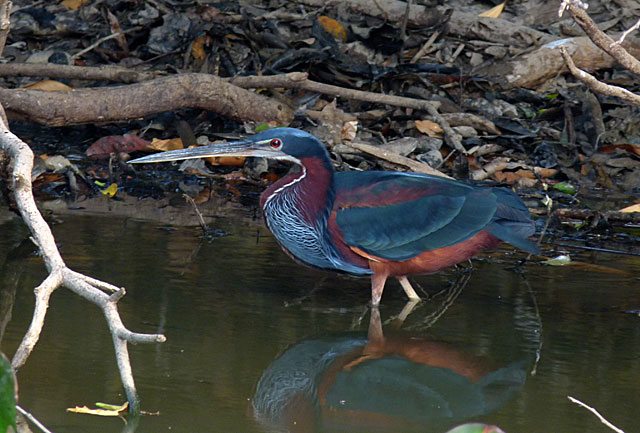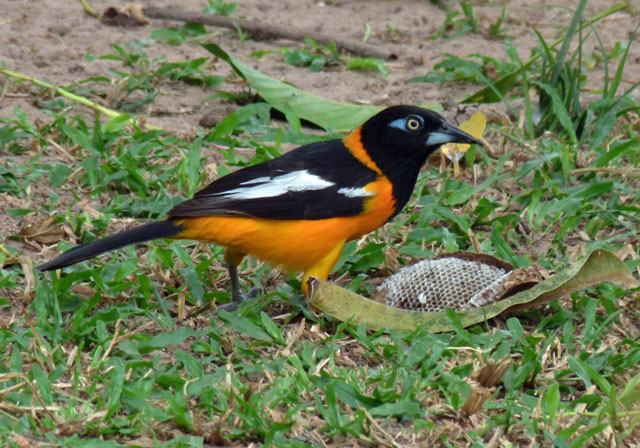From the Field
April 8: Steve Howell and Jon Dunn on their just-concluded scout of Honduras
Yesterday we visited the cactus thorn forest of the upper Aguán Valley (below), home to the endemic Honduran Emerald (below), rediscovered only in 1988 but common and thriving now in a large reserve. The suite of other species not found on the humid coastal slope included endearing White-bellied Wrens and dazzling Salvin's Emeralds (both below). With reluctance we finally had to leave the luxury of Pico Bonito, where the grounds (below) and adjacent forest host many wonderful birds. Birds on our last morning around the lodge included toucans, motmots, 2 flocks of "White-chinned" Swifts, ethereal White Hawks, and (all below) another male Lovely Cotinga (seen to be molting when in flight!), four species of trogons including Black-throated, and a fiery-headed male Red-capped Manakin glowing in the forest understory. We look forward to returning next year with a group to this wonderful country, off the beaten track but with a stunning array of avian riches.
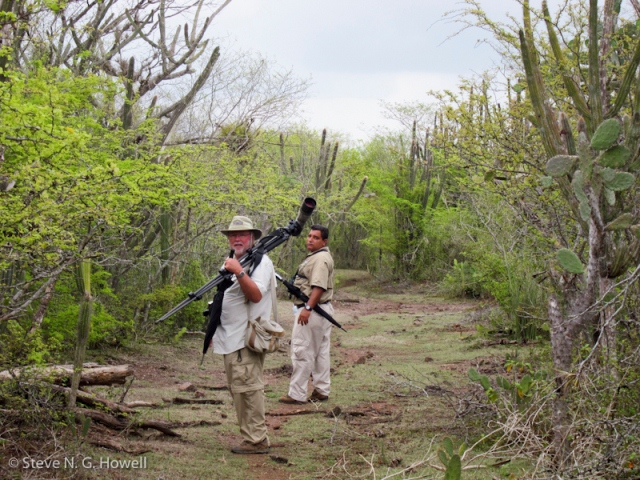
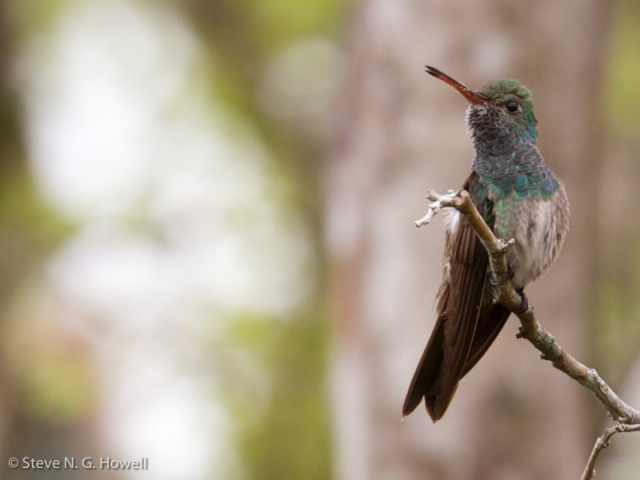
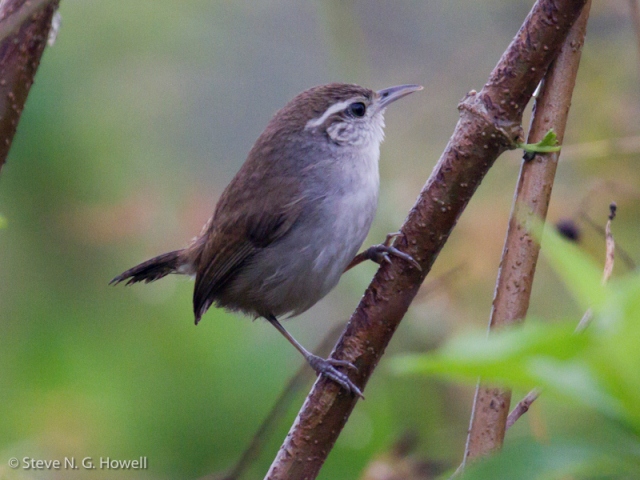
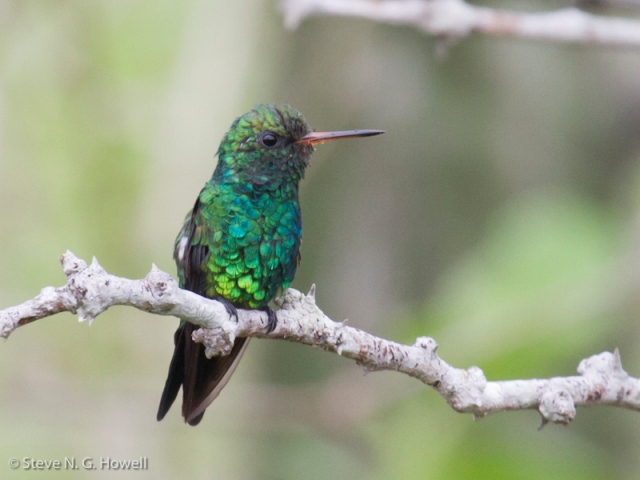
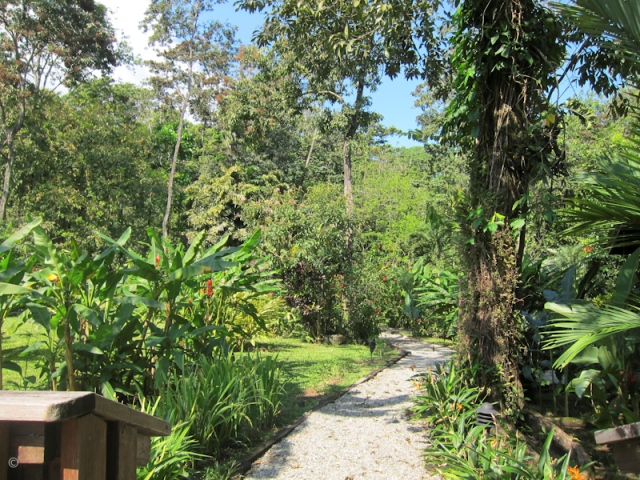
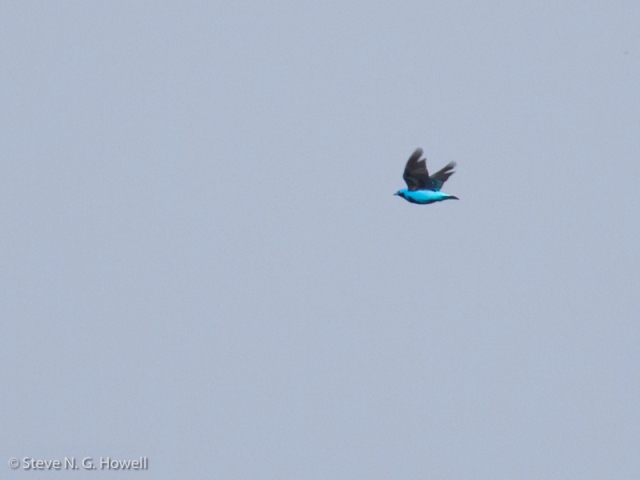
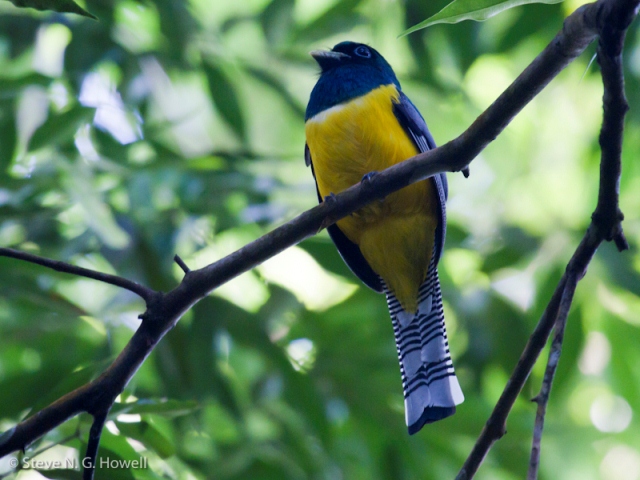
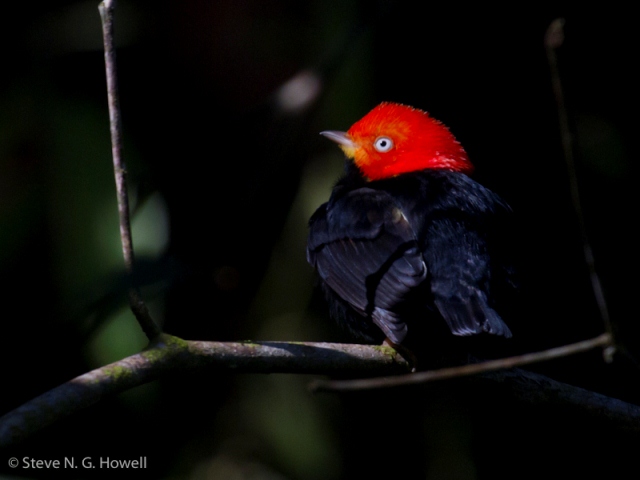
April 5: Steve Howell and Jon Dunn from their on-going scout of Honduras
Who knew that Vermiculated Screech-Owls called in the daytime, but the roosting pair we watched (below) sang several times over the course of our leisurely study. At the other end of the spectrum, we saw flocks of a species of Cypseloides swift (below), presumably White-chinned (except they looked unlike White-chinned in South America... Could they have been White-fronted Swift, known only from Mexico, or a new species altogether?). Less problematic to identify were the burningly bright male Lovely Cotingas, for which Pico Bonito is justly famous: we saw our first on the afternoon we arrived and then another while having breakfast the next day - what an amazing bird! Then into the forest, where migrants mixed with residents at fruiting trees, such as male Scarlet Tanager and Golden-hooded Tanager (below). The river offered a very refreshing swim, and 12 species of hummingbirds at the feeders ranged from an understated but nonetheless handsome Band-tailed Barbthroat to the decidedly overstated Violet Sabrewing and dazzling Violet-crowned Woodnymph (all below).
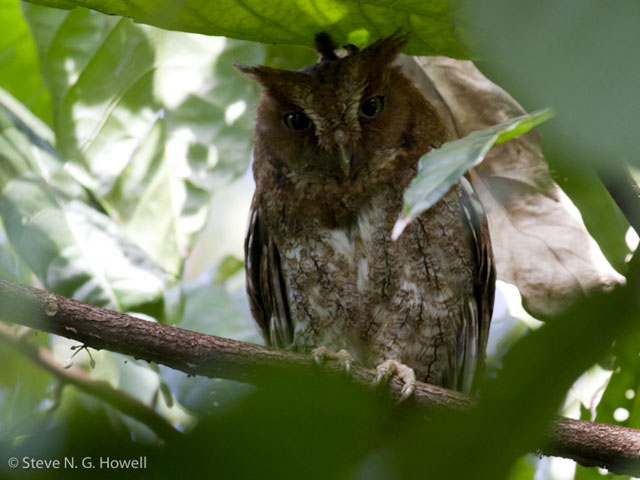
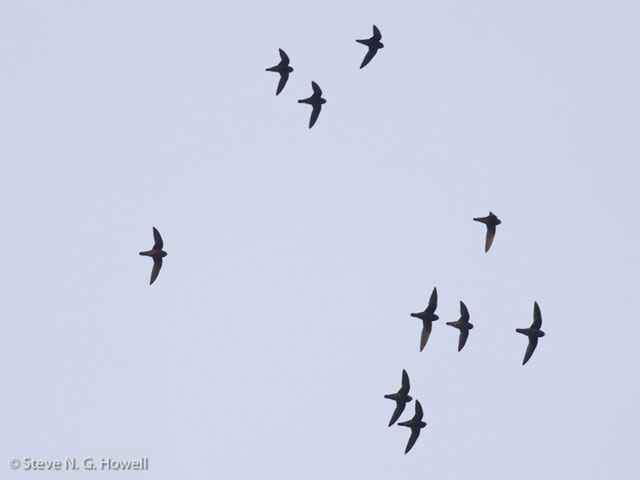
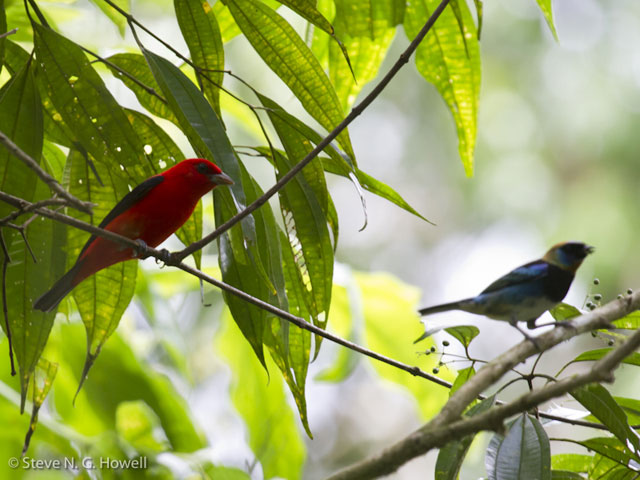
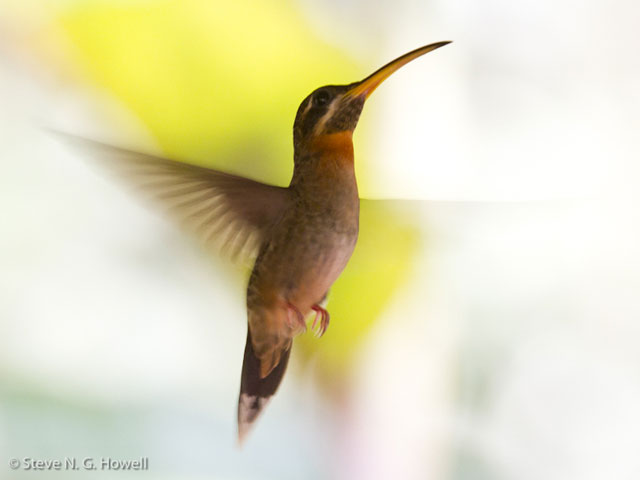
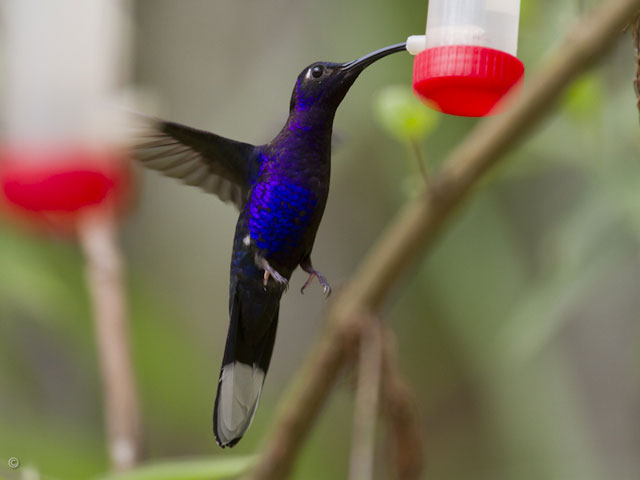
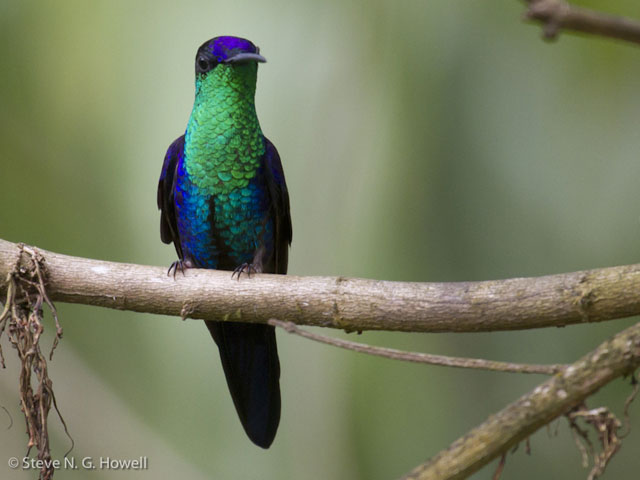
April 3: Steve Howell and Jon Dunn on their scouting trip to Honduras
After the short flight from Miami, and within 3 hours of our plane touching down, we were watching a stunning Keel-billed Motmot (below), having just enjoyed a delightful male Black-crested Coquette (below) and striking Northern Royal Flycatcher - what a great introduction to birding in this often-overlooked country. Yesterday we were suitably intoxicated by point-blank views of an incredible male Wine-throated Hummingbird (below) and appreciated how birdy this part of the world is - with over 150 species in an easy day, from migrant Mississippi Kites and Golden-winged Warbler, regionally endemic Bushy-crested Jays, and widespread but nonetheless wonderful tropical species such as very vocal Laughing Falcon (which must have been told a great joke) and the always impressive Montezuma Oropendola (below). Today, after three species of motmots before breakfast, the supporting cast included such stunners as White-collared Manakin and Keel-billed Toucan (both below). We then drove to the wonderfully comfortable cabins at Pico Bonito Lodge, with the surrounding trees including plenty of Cacao (= chocolate), and a Great Potoo (below) roosting out front of Jon's cabin. Now, time for a cold beer and dinner... What will tomorrow bring?
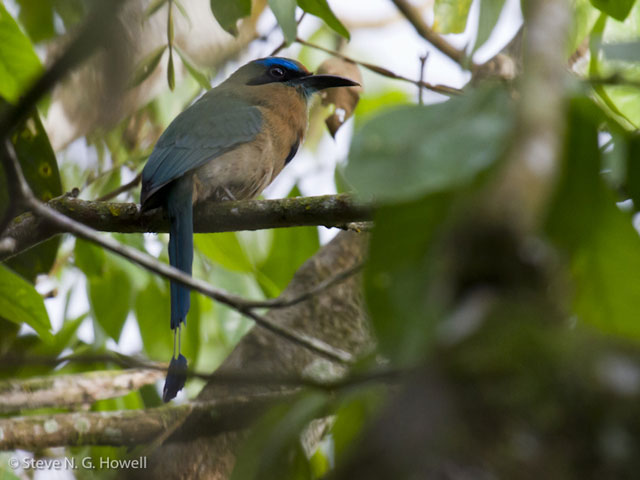
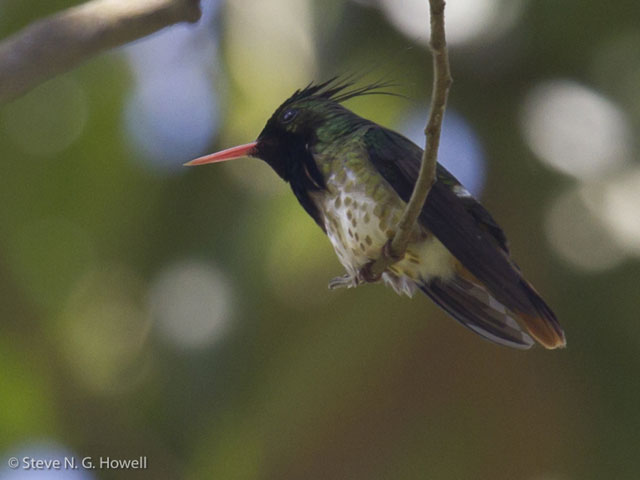
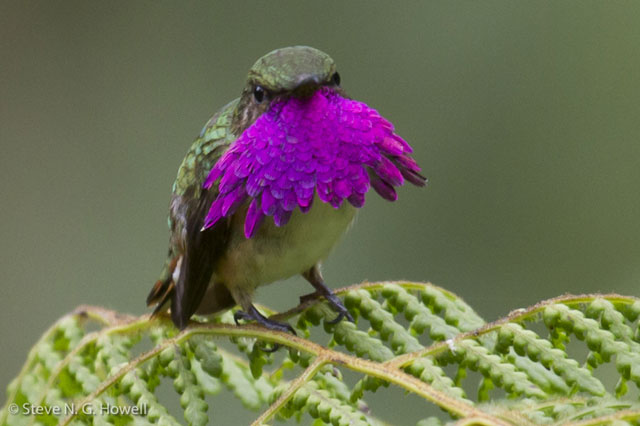
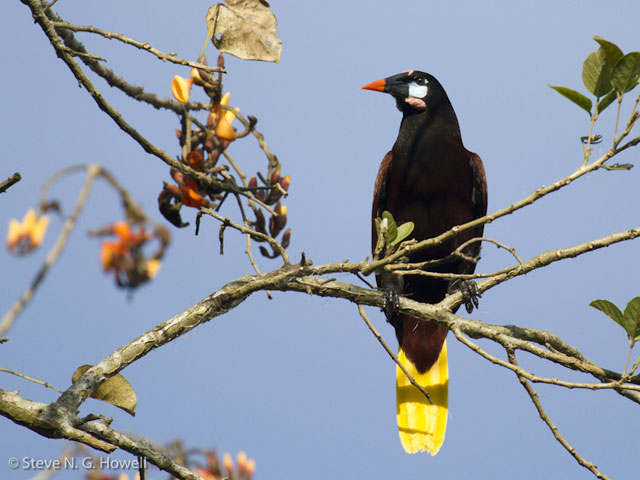
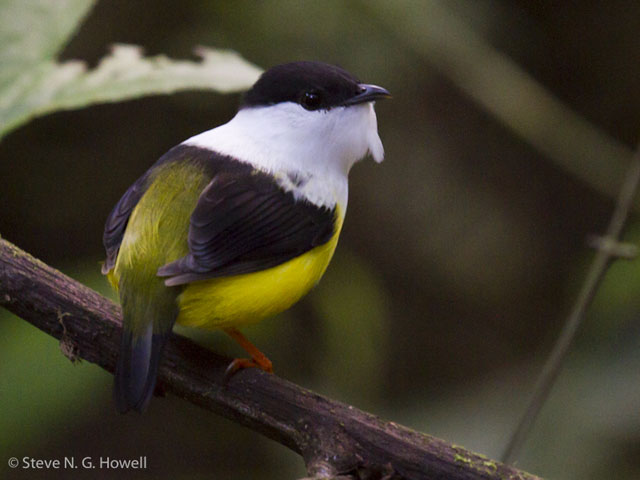
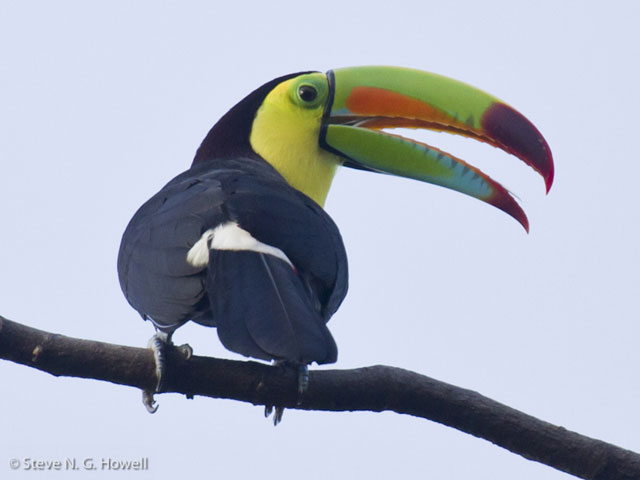
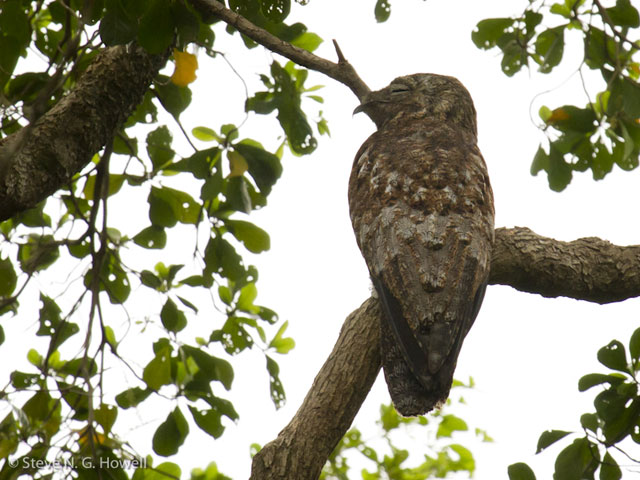
April 1: Gavin Bieber from his just-completed Panama in Spring tour
Panama was, as usual, superb and with only two lodges, we got to know many of the resident creatures well. There seemed to be an endless parade of fascinating birds from the gaudy Black-mandibled Toucan and boisterous Red-crowned Woodpeckers to understory gems like Blue-crowned Manakin and overstory dwellers like Masked Tityra (all four below). By looking closely into both the canopy and the leaf litter, we found a perched Great Potoo and a dazzling Black-and-Green Dart Frog (both below). The extension to Burbayar Lodge revealed a host of gaudy tanagers and honeycreepers, lengthy views of a perched Ornate Hawk-Eagle, and a nesting pair of the enigmatic and very poorly studied Sapayoa!
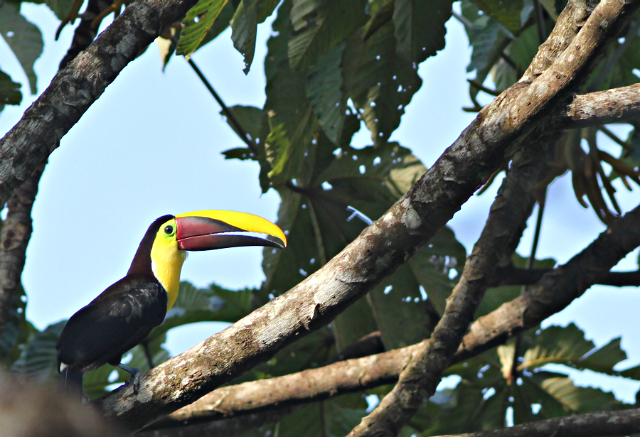
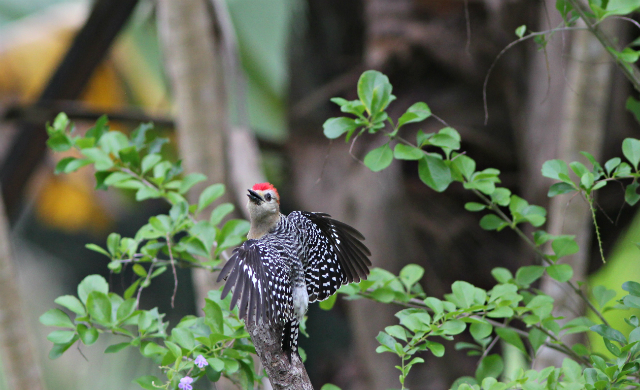
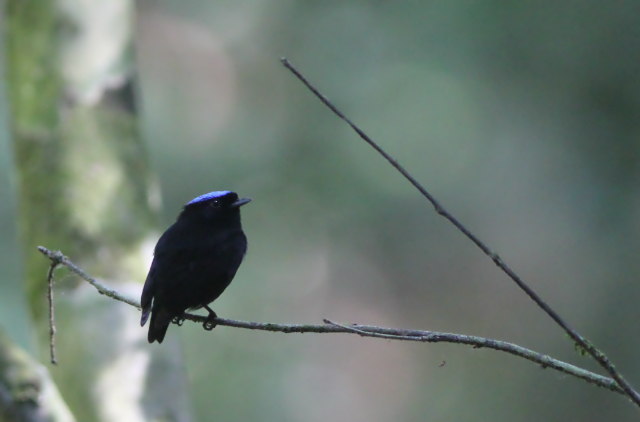
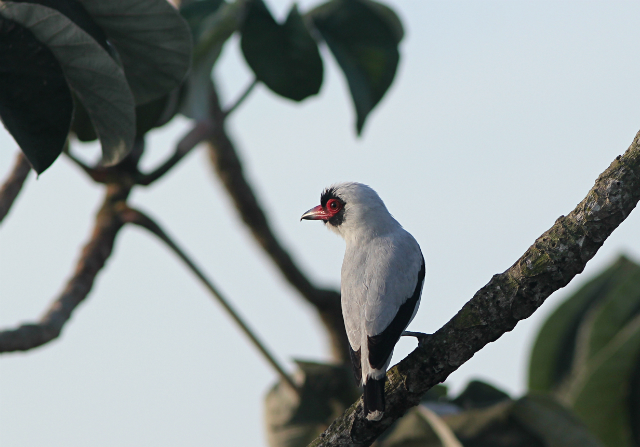
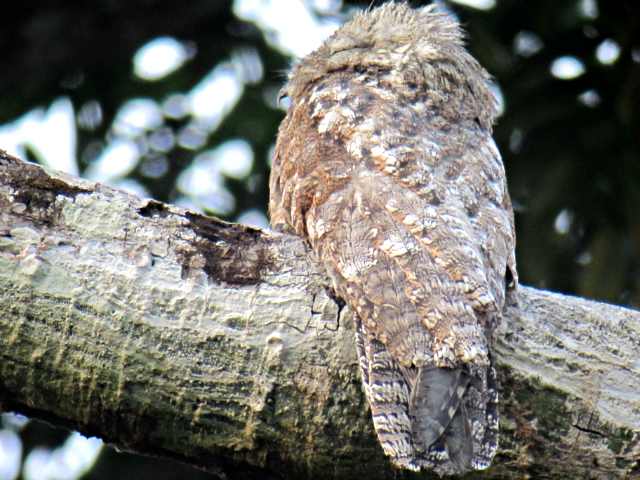
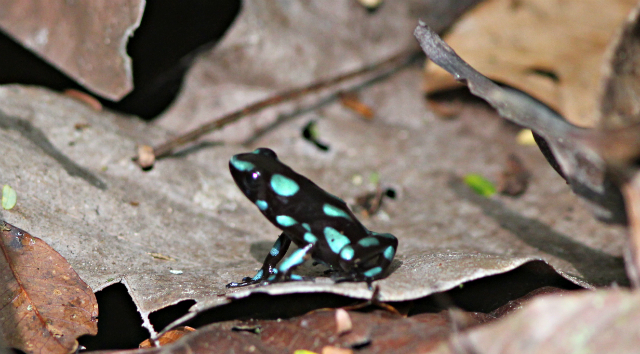
April 1: Rick Wright on his just-completed tour to Nebraska's Platte River
Sharp-tailed Grouse (below) in the morning, American Woodcock in the evening--and a lone Whooping Crane tucked into the middle of a flock of 75,000 Sandhill Cranes (the latter coming to roost, below). Where but Nebraska in spring? This year we had it both ways: chilly weather early on kept 23 species of waterfowl around in excellent numbers (a single flock of 2,500 Richardson's Cackling Geese, daily hundreds of Redheads and Lesser Scaup), while sudden warmth at the end of the tour brought in lots of Harris's Sparrows and an early Eastern Towhee. The crane show was spectacular as always, with a single Whooping Crane tucked into the middle of a roost of 75,000 Sandhills. And nothing says spring on the Great Plains like close-up views of dancing Sharp-tailed Grouse and Greater Prairie-Chickens.
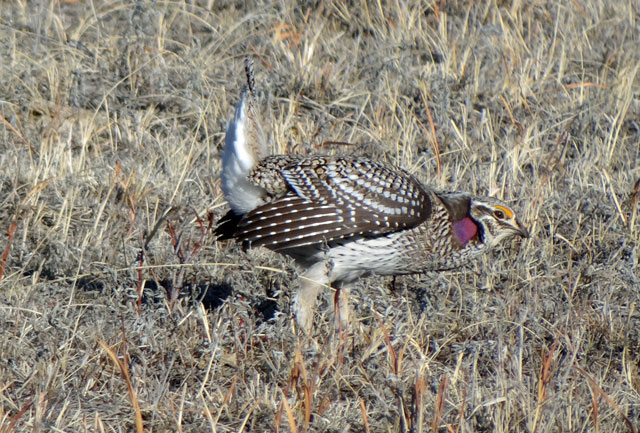

March 23: Paul French from his on-going tour of Israel
From the first morning's viewing of McQueen’s Bustard (below, if a bit hazy) to this evening's surprise sightings of Jungle Cat, Marbled Ducks and a stunning adult Great Black-headed Gull, Israel is certainly proving to be a land of plenty with regards the birds. Our time in Eilat and the Negev desert proved to be perfectly timed as the migration was late in starting, and our first day coincided with the first wave of migrants. Large flocks of Steppe Buzzards, Black Kites and White (below) and Black Storks passed close over our heads in the Eilat mountains, while the bushes contained Cyprus Wheatear, Ruppell’s and Subalpine Warblers, “Ehrenburg’s” Redstart and many more. We even jammed in on one of two Black Bush Robins, a real Western Palearctic rarity. A White-tailed Plover was also very welcome, while an elusive Baillon’s Crake shared a pool with a couple of Little Crakes and a single Spotted Crake! With all this we still had time to visit a ringing station (below, Ruppell's Warbler in the hand). Southern Israel is truly the best location in the Western Palearctic for the diversity of migrants and the ease with which many of them can be found.
Moving up the Dead Sea area, we were treated to great views of a pair of Hume’s Owls in a stunning moonlight wadi – truly a great birding experience. If that was not enough, later that evening we had stellar views of one of the last remaining Nubian Nightjars in Israel (below). This highly endangered population colloquially known as Tamarisk Nightjar is down to about 25 pairs now, and most likely represents a split from the more widespread Nubian Nightjar.
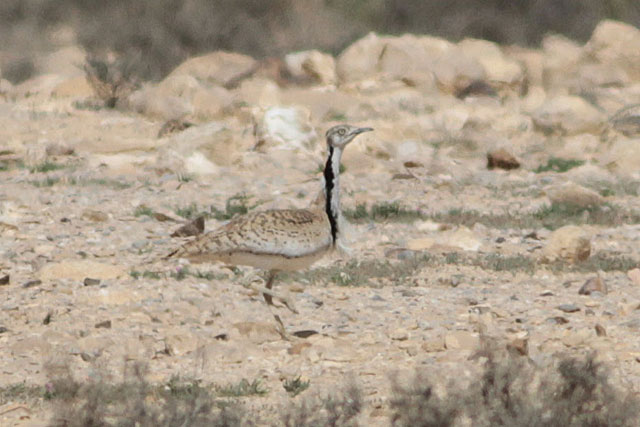
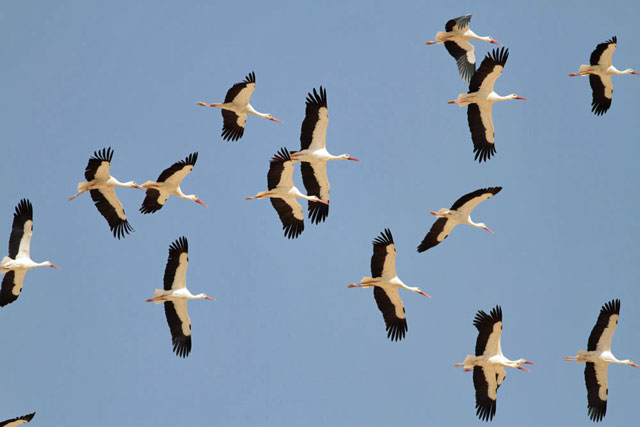

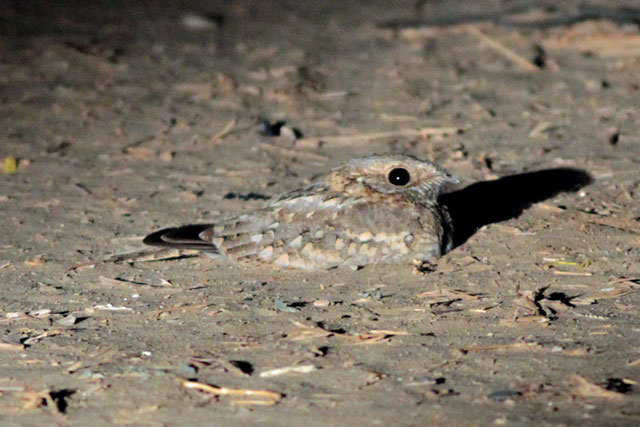
March 22: Susan Myers from her on-going tour of Vietnam
Our last day in Cuc Phuong and this has been one of my most memorable visits in the twenty years I've been coming here. North Vietnam is not an easy place to bird, it has to be admitted. Many of the birds are shy and skulking and seeing them requires patience and concentration as well as a quick eye. All that said, Cuc Phuong, which is Vietnam's oldest national park, is a treasure. The forest is beautiful and the birds are outstanding. We've had three full days here and our first day was just wonderful with all the target birds seen well. We had a gorgeous White-tailed Flycatcher early on, then Limestone Wren-Babblers came in close to give us close up views, later a very neat group of White-winged Magpies flew into a nearby tree and allowed us to study them well. On day 2 we went a little further afield to a neighboring nature reserve set in wondrously beautiful limestone karst country (below). Here we found a lovely collection of open country and wetland birds but the main object of our attention was the handsome and very rare Delacour's Langur. Certainly the best I have ever seen them! Later in the afternoon we visited the Cuc Phuong rainforest again and stumbled across a little bathing pool where we recorded a very remarkable collection of birds - most notably endemic Rufus-throated Fulvettas (below), many Rufus-tailed Robins (below), dazzling Fujian Niltavas and a pair of White-browed Bush Robins. As I write this it is mid afternoon on our third day and we are just in from the forest where we finished off with a breathtaking sighting of a stunning male Silver Pheasant!

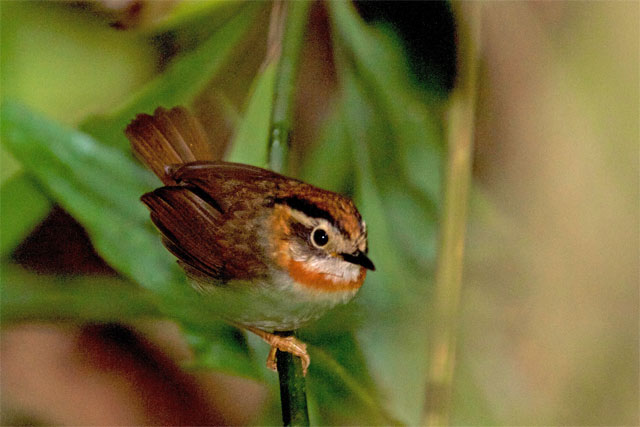
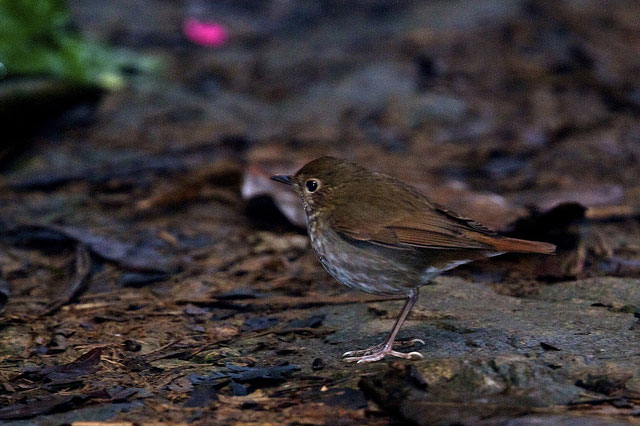
March 21: Gavin Bieber on his just-concluded tour to the Dominican Republic
Most people who venture to the Dominican Republic visit only one of the all-inclusive resorts that line the island's east and north coasts. We on the other hand spend most of our time in the rugged and beautiful southwest, where the highest mountains in the Caribbean, topped with pine forests and hardwood lined creeks, meet the azure waters and nearly vacant white sand beaches. The island supports 31 endemic birds, plus a few additional candidates for full species status. We manged to see all 30 endemics possible (the 31st is only in Haiti), including such fascinating birds as Palmchat, Broad-billed Tody, Hispaniolan Parrot, Hispaniolan Trogon and the Hispaniolan race of Loggerhead Kingbird (all below). It's an amazingly beautiful island, with incredibly diverse and scenic habitats, a high rate of endemism (especially in its herpetofauna) and a friendly populace. It's a superb place for a birding tour.

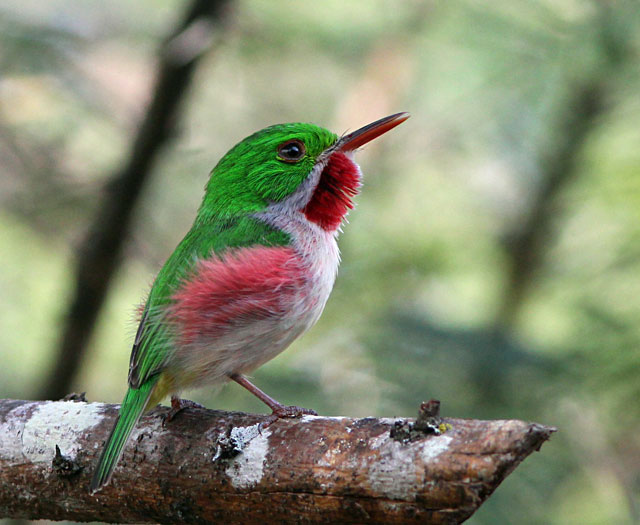
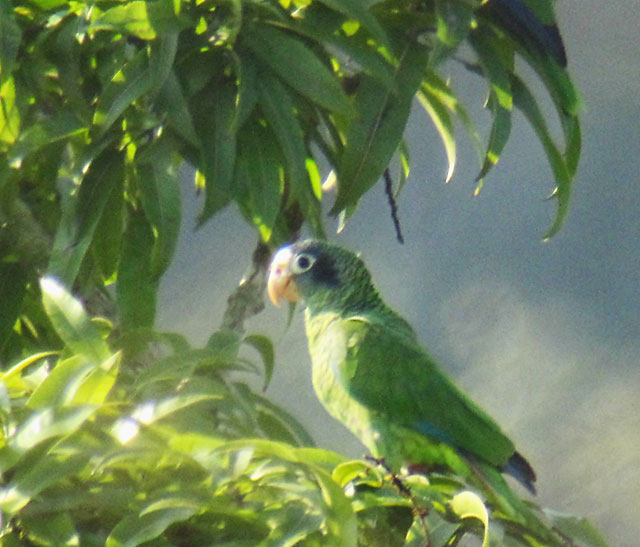
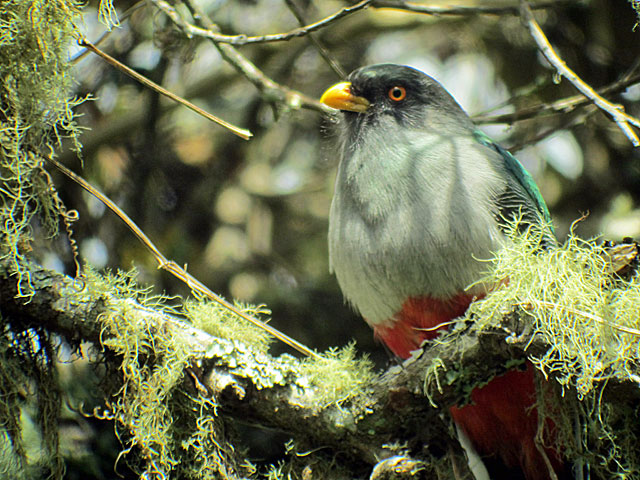

March 21: Gavin Bieber on his just-concluded tour of Puerto Rico
Although islands in the Greater Antilles don’t hold the same bird diversity as similarly sized mainland sites at the same latitude, they have a higher rate of endemism and hold many regional specialties. This year we encountered 16 of the 17 endemics (all except the Puerto Rican Parrot, which is virtually impossible to see during the breeding season due to forest closures), and 113 species overall (a new trip record). Some of the highlights were our excellent views of the endemic and endearing Puerto Rican Tody, a reclusive Key West Quail Dove, the colorful Puerto Rican Woodpecker and a surprise American Flamingo. I can think of few better places for a relaxed week long trip in the Caribbean than the beautiful and accessible island of Puerto Rico.

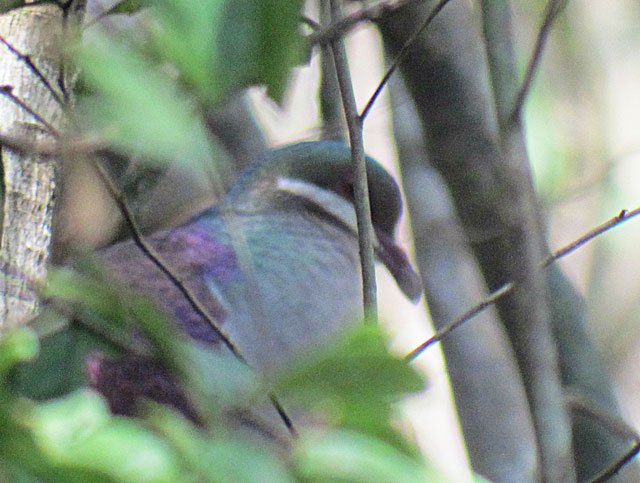


March 21: David Fisher from his ongoing tour to the Venezuelan Andes and Llanos
At Hato El Cedral in the llanos of Venezuela, the number and diversity of waterbirds almost overwhelmed us. Thirteen species of heron, 3 storks, 7 ibis and a spoonbill in one morning was remarkable enough, but when many of those species are present in hundreds along with thousands of whistling-ducks, hundreds of Orinoco Geese and many waders and terns it is hard to know which birds to look at first. The highlight for many was the beautiful Agami Heron that gave point-blank views (see below) while for others it was a Giant Anteater (below) that we ‘stalked’ across the grassland, getting very close to this amazing creature by staying downwind and silent. The garden at the lodge was filled with passerines, perhaps the most colorful of which was the Venezuelan Troupial (below).
